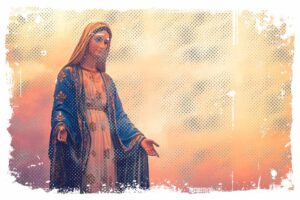Have you ever wondered if Polish peasants were considered slaves? Well, I can tell you that this question has been asked by many people, including defenders of the rural population and even foreigners who were shocked by Polish relations. Peasants were often referred to as serfs, which basically meant serf slaves. This raises another question: were these peasants even seen as human beings by the Polish elite? Let me say that the majority of society, including the peasantry, were often described as cattle, dogs, or walking things!

Serfdom in Poland – Was It Really Slavery?
In Poland, serfdom, or the forced labor of peasants for the nobility, existed since the 16th century. It’s clear that this labor turned peasants into slaves, with their living conditions only slightly better than those of the enslaved people brought from Africa to the plantations of the Americas.
Now, I believe it is worth noting that serfdom in Poland was abolished in the 19th century. First, peasants living in the Prussian partition (1811-1850) gained personal freedom and rights to their land. Later, peasants from Galicia, in the Austrian partition, saw serfdom abolished in 1848. Finally, serfdom was abolished in the Russian partition in 1861.

However, I know that peasants still experienced serfdom in the Second Polish Republic, which regained independence in 1918. How is this possible? To understand this, we need to look at the situation in regions like Spisz and Orawa, which had a lot of autonmy and different laws.
↳ PRO TIP: Do you like traveling? Then before you buy any ticket or book an attraction, check if it's available in this worldwide Viator Database. You may save a lot of money and time. No need to thank me :)
Before Serfdom Took Root
In the early years of Poland’s existence, certain forms of serfdom were already present. According to Witold Doroszewski’s dictionary, serfdom is defined as:
„the obligation to work for free on the land of the lord, manor, imposed on peasants in the feudal era”.
Witold Doroszewski
The term „serfdom” first appeared in a written text in 1600, in Sebastian Fabian Klonowic’s „Worek Judaszów” Interestingly, this obligation was also imposed on city dwellers, as long as they belonged to a feudal lord.
So, where did the term serfdom (poddaństwo, pańszczyzna) come from? Linguists think it’s a combination of the words „your work”. In the past, this duty was simply called work, and the word was used in this sense as early as the 14th century. Regardless of the terminology, this feudal duty has been a part of village life for a very long time.
The Early Days Weren’t So Bad
In the 11th to 13th centuries, the situation of peasants, or rather, peasants as they were called back then, wasn’t that terrible. First of all, they were mostly free people. Only some, who belonged to episcopal estates or the knighthood, lost their freedom. These slaves were directly under the lords’ jurisdiction, while freemen had access to the ducal judiciary.
Of course, there was a difference in status between peasants and lords. Peasants, being free, were still subjects of the owner of their village. For instance, penalties for killing a peasant were lower than for killing a lord. Moreover, in cases of a serf’s violent death, the lord could collect up to 2/3 of the compensation due to the victim’s family.
Back in the first centuries, serfdom was not a significant burden. Until the 14th century, it was just a few days of work per year. There were different forms of serfdom, such as coupling, serfdom on foot, and the dawn.
Gelors – A Different Kind of Serfdom in Hungary
In Hungary, serfdom was abolished on March 18, 1848, but the then Magyar Sejm, which was sitting in Bratislava, decided on only a partial solution to protect the interests of the nobility. Only peasants who had farmed their land for generations were granted enfranchisement.
The Act did not cover serfs sitting on the so-called kopanice, who leased land on the basis of a voluntary agreement with the master. In return, they were obliged to work. Thus, they were left without land and had no way to feed their families, or they had so little land that its crops were too modest to survive. In both cases, the peasants had to resubmit themselves to feudal dependence.
This is how the „jello” or „gelor” system was born, which was, in theory, a voluntary agreement between the lord and the peasant. The master gave the peasant land on which he could build a house and cultivate. In return, the magnate expected the peasant to work for him on the farm. In the area of Polish Spisz, the working hours ranged from 25 to even 50 days for each morgen. In practice, for example, in the village of Niedzica (today’s Nowy Targ county), gelors had to work for a nobleman even 150 days a year.
Gelors worked from dawn to dusk with only a break for lunch. Work for an adult could be done by his children, but then such a day’s wages counted only as 1/3 of the normal wage. One working day of the father was equal to 3 working days for the children, who were sent, for example, to graze cows.
Historians debate whether the master-gelor arrangement was fair. On one hand, the peasants had living conditions, but on the other, the magnates strongly interfered in their lives. Even the smallest offenses were punished, and the nobility decided when they could marry and with whom. Adult children of gelors were rarely allowed to leave the village and, for example, setle in the city.
Peasants living under these conditions were present throughout the Kingdom of Hungary (a part of the Austro-Hungarian Empire). When the Hungarian Sejm abolished serfdom in 1848, 624,000 people received land enfranchisement, but about 1.2 million people still had to remain in a feudal relationship. Theoretically, they were free and could go anywhere, but in practice, leaving would mean starvation for them. So they became gelors.
As for the current Polish lands in Spisz and Orawa, which were part of Hungary before 1918, it is not known exactly how many gelors lived there initially. Over the years, some peasants managed to buy their land from the nobility, so the number of gelors decreased. After Poland regained independence, many such people did not exist in the new country.

In the 1930s, about a hundred gelor families lived in Spisz in villages belonging to the Hungarian noble families of Salomon and Jungenfield. They were inhabitants of the villages of Falsztyn, Niedzica, and Łapsze Niżne. In addition to the „lords of the Lord,” there were also church gelors in Łapsze Niżne, Trypsz, Frydman, and Niedzica. Their duties were much lighter and averaged 20.5 days per year. Priests on the other side of Podhale, in Orawa, also had their gelors.
Ending Serfdom in the Second Polish Republic
After Poland regained independence, the persistence of serfdom in the Second Polish Republic troubled many intellectuals from nearby Zakopane or Nowy Targ. Discussions on how to end this state of affairs began in 1920, led primarily by Wojciech Roj, an MP from Zakopane and a member of the Polish People’s Party. However, it took free Poland 13 years to address the issue of the Żłorzy.
On March 20, 1931, the Sejm in Warsaw adopted the „Act on the liquidation of relations in Zelor in Spisz,” which authorized the State Treasury, through the Ministry of Agriculture, to purchase land under the houses of gelor families from the Salamons and Jugenfields. Their agricultural area was also enfranchised, finally allowing these people to become masters of their own fate.
In 2006, the regional newspaper „Na Spiszu” interviewed Jan Janos, a 103-year-old inhabitant of Niedzica who was the last living peasant to experience serfdom on Polish lands. Janos reecalled working for the countess as a child and young man, helping his parents work off their serfdom. When he started his own family, he was also an iron worker until 1931, working for the court as many as 140 days a year. Despite this, he remembered the heiress Ilona Salamon as a just woman until the end of his life.
This story highlights that some gelors had a different value system than the completely free highlanders living nearby. In the 1930s, Baron Jungenfield, the lord of the court in Falsztyn (today’s Łapsze Niżne commune), had an argument with one of the highlanders while driving around the area. He wanted to beat him with a whip, but instead, he barely escaped with his life. He had forgotten that he was dealing with a highlander from the neighboring village of Czorsztyn, not one of his subjects. In Austrian Galicia during the partitions, serfdom had been abolished 80 years earlier.
References
- https://wiadomosci.onet.pl/krakow/panszczyzna-w-polsce-minelo-zaledwie-90-lat-od-kiedy-ja-zniesiono/wlfs61r
- https://ciekawostkihistoryczne.pl/2023/03/03/poczatki-panszczyzny-w-polsce/
- https://www.euroreg.uw.edu.pl/dane/web_euroreg_publications_files/6199/poblocki_niewolnictwo_po_polsku.pdf



